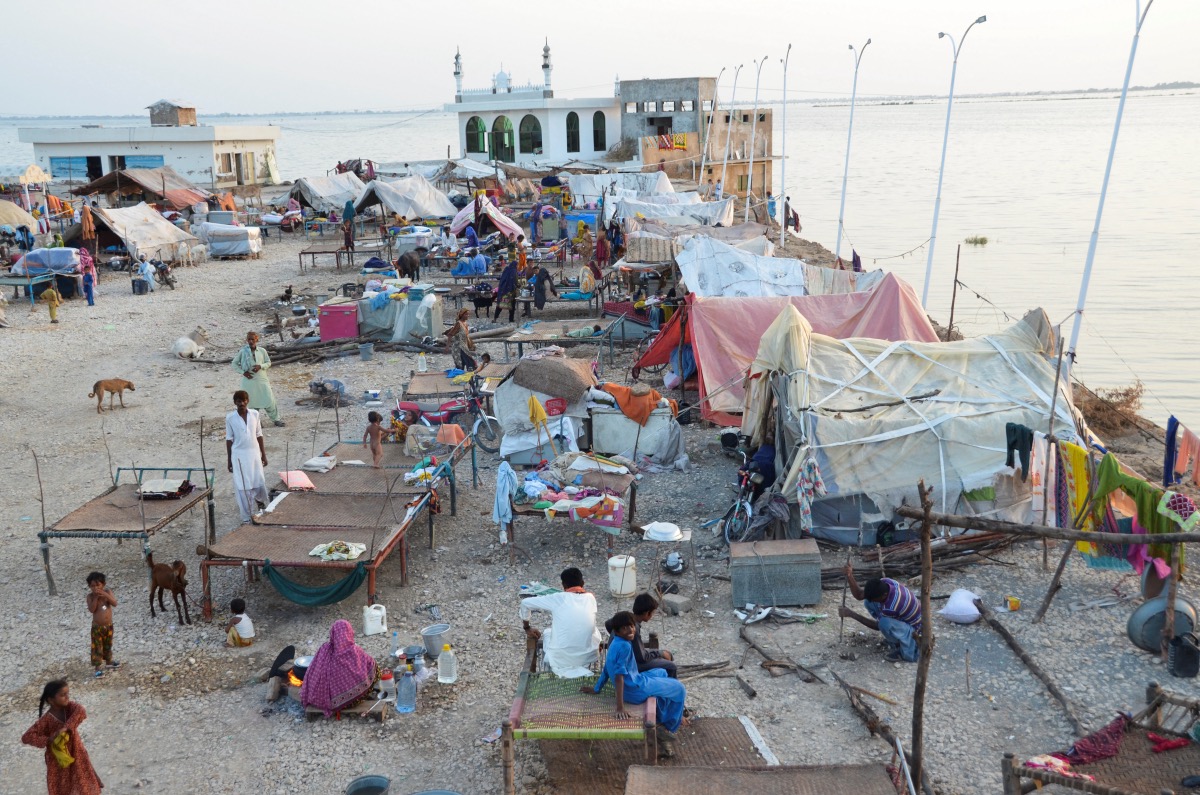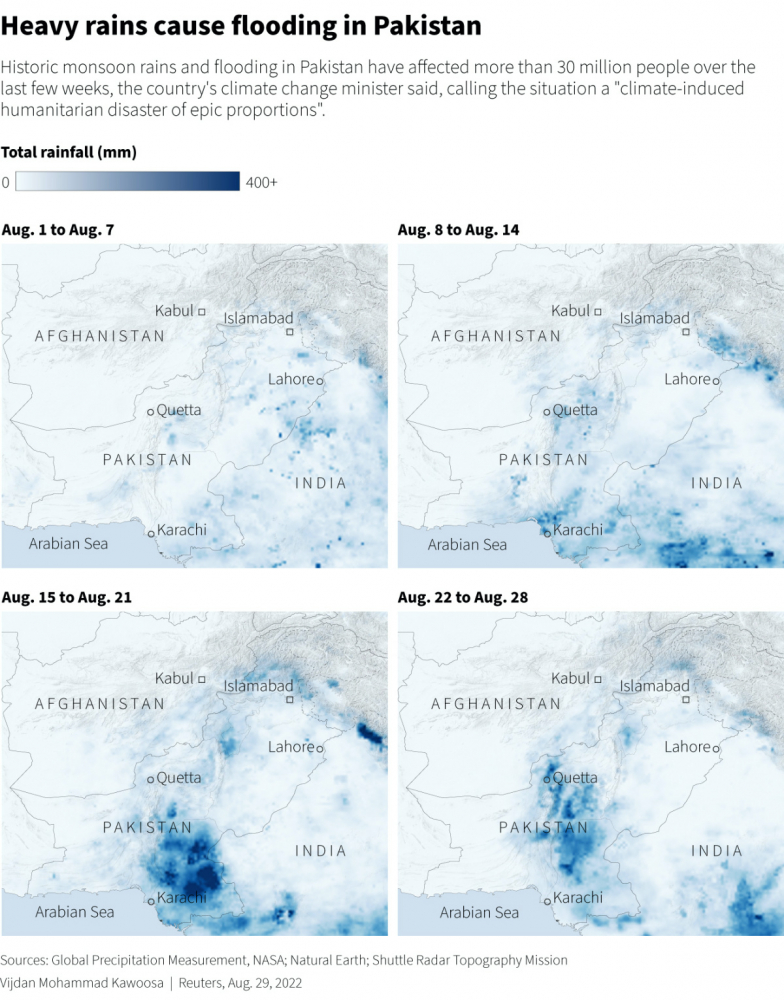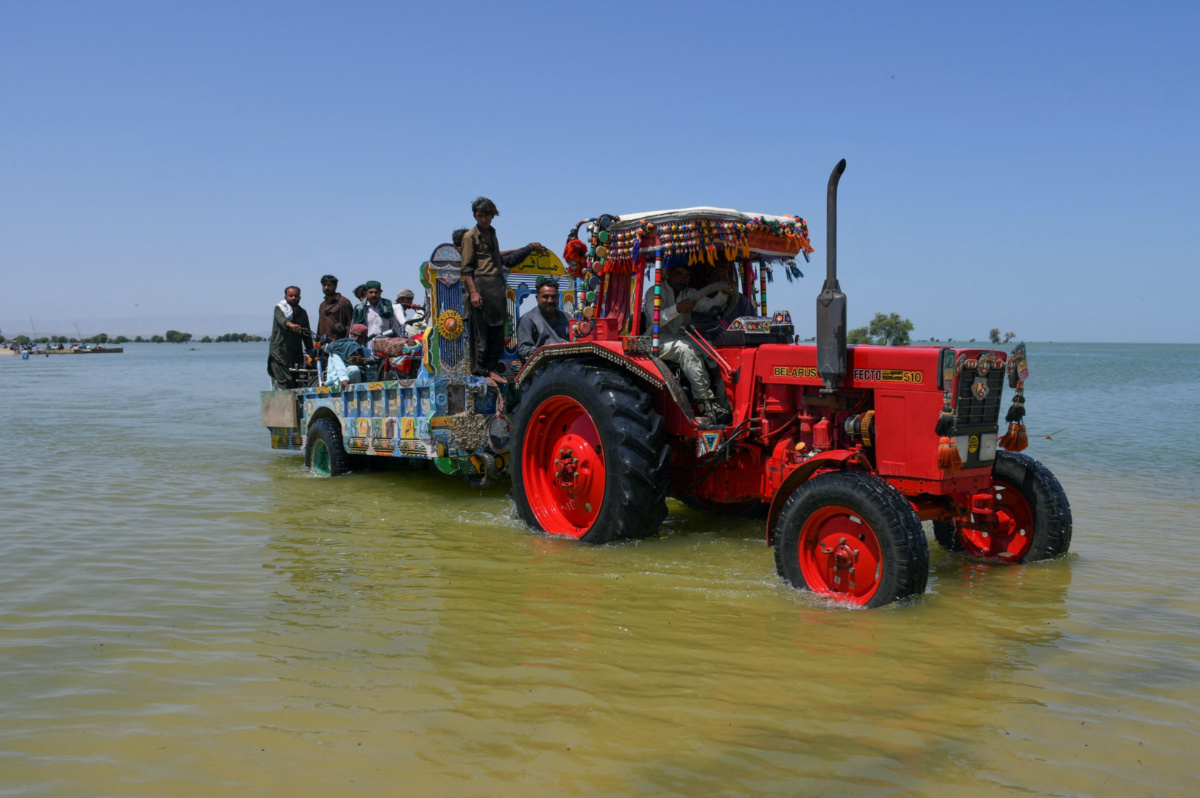Dadu, Pakistan
Reuters
Southern Pakistan was braced for yet more flooding on Thursday as a surge of water flowed down the Indus river, threatening further devastation in a country already a third inundated, in a growing disaster blamed on climate change.
Record monsoon rains and melting glaciers in northern mountains have triggered floods that have killed at least 1,208 people, including 416 children, according to the National Disaster Management Authority.

A general view of makeshift tents as flood victims take refuge, following rains and floods during the monsoon season, in Dera Allah Yar, District Jafferabad, Pakistan, on 1st September. PICTURE: Reuters/Stringer
Pakistan’s meteorological office predicted more rains and flash flooding for the month of September.
“Overall, a tendency for normal to above normal precipitation is likely over the country during September,” the office said in monthly outlook posted at its website on Thursday.
North-eastern Punjab province and the southern Sindh are expected to receive above normal rainfall, it said, adding that isolated heavy downpours can trigger flash flooding.
The military said on Thursday it had evacuated some 50,000 people, including 1,000 by air, since rescue efforts began.
The United Nations has appealed for $US160 million to help with what it has called an “unprecedented climate catastrophe”. Britain on Thursday pledged $US17 million in aid.
“We’re on a high alert as water arriving downstream from northern flooding is expected to enter the province over the next few days,” Sindh provincial government spokesman Murtaza Wahab told Reuters.
Wahab said a flow of some 17,000 cubic metres per second was expected to swell the Indus, testing its flood defences.
Pakistan received nearly 190 per cent more rain than its 30-year average in the quarter from June to August, totalling 390.7 millimetres
Sindh, with a population of 50 million, has been hardest hit, getting 466 per cent more rain than the 30-year average.
Some parts of the province look like an inland sea with only occasional patches of trees or raised roads breaking the surface of murky flood waters.

“No help”
Hundreds of families have taken refuge on roads, the only dry land in sight for many. Villagers rushed to meet a Reuters news team passing along one road near the town of Dadu on Thursday, begging for food or other help.
Many are headed for urban centres, like the port city of Karachi, which has for now escaped the flooding.
“We lost our house to the rain and floods, we’re going to Karachi to our relatives. No one has come to help us,” said Allah Bakash, 50, leaving with his family and belongings loaded on a truck.
The floods have swept away homes, businesses, infrastructure and roads. Standing and stored crops have been destroyed and some 810,000 hectares of farm land inundated.
The government says 33 million people, or 15 per cent of the 220 million population, have been affected.

Villagers board a tractor trolly as they travel amid flood water, following rains and floods during the monsoon season in Bajara village, Sehwan, Pakistan, on 31st August. PICTURE: Reuters/Yasir Rajput
The National Disaster Management Authority said some 480,030 people have been displaced and are being looked after in camps but even those not forced from their homes face peril.
“ More than three million children are in need of humanitarian assistance and at increased risk of waterborne diseases, drowning and malnutrition due to the most severe flooding in Pakistan’s recent history,” the UN children’s agency warned.
The World Health Organization said that more than 6.4 million people were in dire need of humanitarian aid.
Aid has started to arrive on planes loaded with food, tents and medicines, mostly from China, Turkey and United Arab Emirates.
Aid agencies have asked the government to allow food imports from neighbouring India, across a largely closed border that has for decades been a front line of confrontation between the nuclear-armed rivals.
The government has not indicated it is willing to open the border to Indian food imports.
The UK’s foreign minister Liz Truss said on Thursday the country had made a £15 million donation that would be used to provide water, sanitation, shelter and to protect women and girls.
– With GIBRAN PESHIMAM in Kabul, Afghanistan






